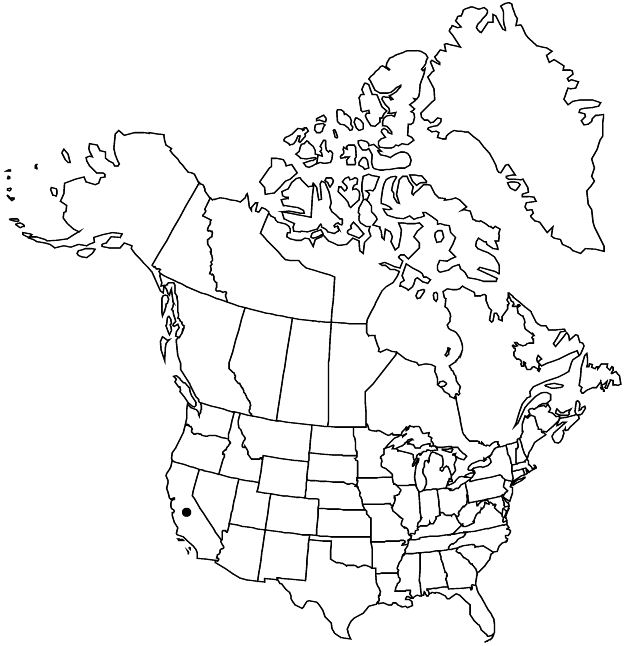Frankenia palmeri
Proc. Amer. Acad. Arts 11: 124. 1876.
Shrubs, spreading, rounded, 1–3 dm; branches puberulous or scattered-hairy, hairs spreading to recurved. Leaves: petiole (0.2–) 0.3–1 mm, not tapering toward blade, apex abruptly and markedly wider than base of blade; blade grayish yellow-green, oblong-ovate, oblong, or linear-oblong, subterete, 1.5–7 × 0.7–1 mm, margins tightly revolute, abaxial surface almost entirely concealed, adaxial surface scattered short-hairy to puberulous. Inflorescences usually compound or simple dichasia, sometimes solitary flowers. Flowers: calyx 3–5 mm, lobes (4–) 5, 0.5–1.1 mm; petals (4 or) 5, white, sometimes pink-tinged proximally, spatulate, (4.5–) 5–7 mm; stamens 4 (or 5), exserted, (4–) 5–8.5 mm; anthers red or yellowish pink; style strongly exserted from calyx-tube, 2 (–3) -branched; ovary 2-carpellate; ovules 2, attached to bases of sutures, pendulous on recurving funiculi. Seeds 1 per capsule, ovoid-conic, 1.5–2 mm.
Phenology: Flowering Mar–Jul.
Habitat: Coastal dunes, upper transitional zone of coastal salt marshes, sandy flats
Elevation: 0–10 m
Distribution

Calif., Mexico (Baja California), Mexico (Baja California Sur), Mexico (Sonora)
Discussion
In the flora area, Frankenia palmeri occurs in southwestern San Diego County.
Selected References
None.
Lower Taxa
"narrow" is not a number.